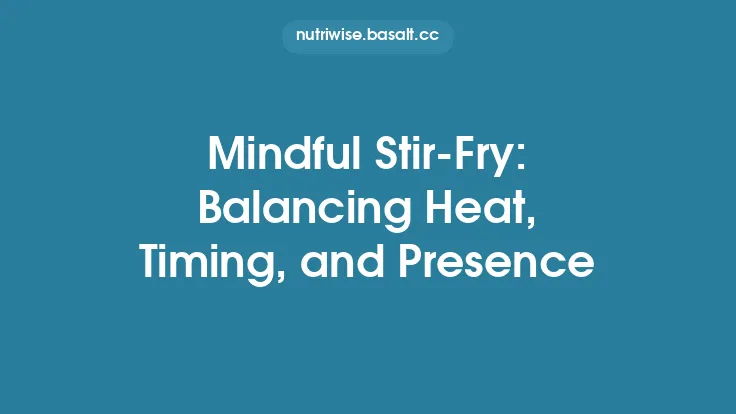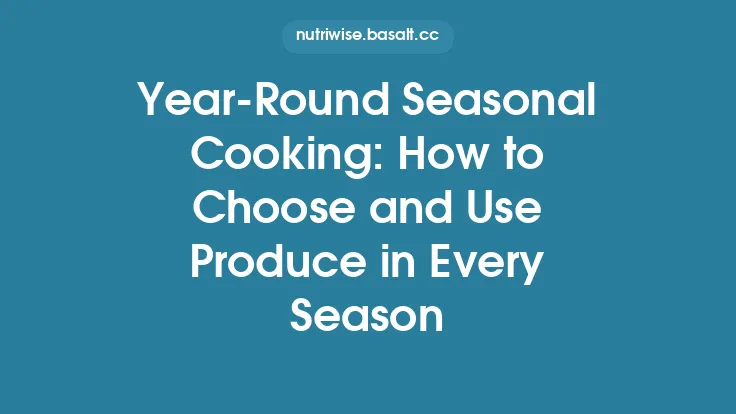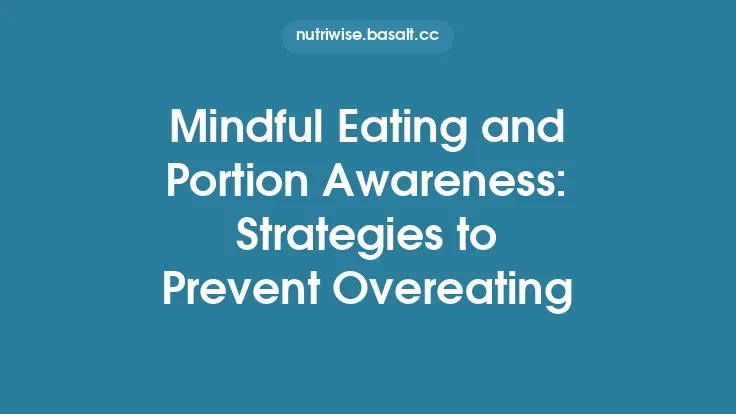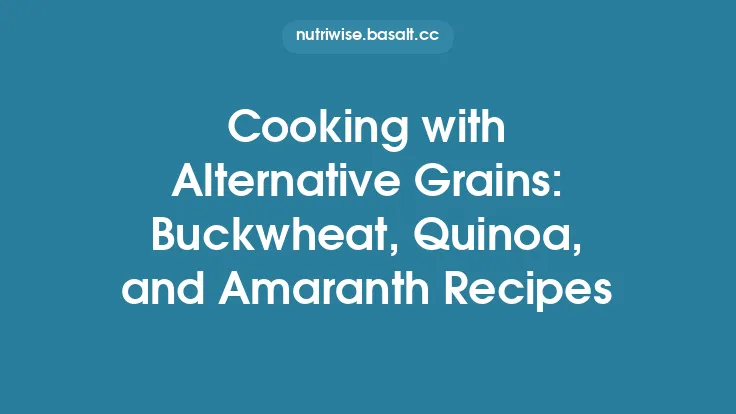Cooking is one of the most accessible forms of mindfulness, and the senses are the gateway through which we experience it. When we deliberately tune into what we see, smell, and feel while we work with ingredients, the act of preparing food transforms from a series of tasks into a rich, immersive practice. This sensory engagement not only heightens the pleasure of cooking but also serves as a natural antidote to stress, grounding the mind in the present moment and fostering a deeper connection to the food we create.
The Role of Vision in the Kitchen
Color as a Nutritional Indicator
The visual spectrum of a dish offers immediate clues about its nutritional composition. Deep greens, such as those found in kale or spinach, signal high levels of chlorophyll and phytonutrients like lutein and zeaxanthin. Bright orange and red vegetables—carrots, bell peppers, tomatoes—are rich in beta‑carotene and lycopene, antioxidants linked to eye health and reduced inflammation. By learning to recognize these color cues, cooks can intuitively balance meals for optimal micronutrient diversity.
Assessing Doneness Through Visual Changes
Many cooking processes are marked by distinct visual milestones:
- Maillard Browning: When proteins and sugars react at temperatures above 140 °C (284 °F), a golden‑brown crust forms, indicating flavor development and a reduction in moisture that contributes to a satisfying texture.
- Caramelization: Sugars melt and turn amber, signaling the creation of complex, sweet‑bitter notes. Watching the color shift from pale yellow to deep amber helps prevent burning, which can produce bitter, acrid compounds.
- Glazing and Reduction: A sauce that transitions from a watery sheen to a glossy, thickened coating demonstrates the evaporation of water and concentration of flavors. The visual cue of a “ribbon” that falls slowly from a spoon is a classic indicator of readiness.
Mindful Plate Composition
Beyond cooking, visual mindfulness extends to plating. Arranging colors, shapes, and heights deliberately can evoke a sense of calm and satisfaction. The act of arranging food thoughtfully encourages a slower, more intentional pace, allowing the mind to settle into the present.
Harnessing Aroma: The Power of Smell
Volatile Compounds and Emotional Response
The olfactory system is directly linked to the limbic system, the brain region governing emotion and memory. When a fragrant herb like basil releases eugenol or a simmering broth emits glutamic acid, the brain registers these volatile compounds, often triggering feelings of comfort and relaxation. Understanding which ingredients produce which aromatic profiles can be a tool for emotional regulation in the kitchen.
Stages of Aromatic Development
- Cold Aromatics: Fresh herbs, citrus zest, and raw spices release delicate, bright notes. Adding them at the end of cooking preserves their volatile oils, providing a fresh burst that can lift a dish’s overall aroma.
- Warm Aromatics: Toasting spices (cumin, coriander, fennel) in a dry pan activates essential oils through gentle heat, deepening their scent and flavor. The “dry‑toasting” stage is a visual and olfactory cue that the spices are ready for incorporation.
- Hot Aromatics: Simmering aromatics like onions, garlic, and ginger in oil initiates the Maillard reaction and caramelization, creating a rich, savory base. The gradual transition from translucent to golden brown is accompanied by a sweet, nutty aroma that signals the foundation of many dishes.
Aromatherapy in Cooking
Deliberately inhaling the steam from a pot of broth or a simmering sauce can serve as a micro‑aromatherapy session. The rhythmic breathing pattern that naturally accompanies this inhalation—slow, deep inhales followed by gentle exhales—mirrors relaxation techniques, reducing cortisol levels and fostering a calm mental state.
Touch as a Guide: Tactile Feedback in Cooking
Texture as an Indicator of Doneness
The sense of touch provides real‑time data about a food’s internal state:
- Meat: A firm, springy resistance when pressed indicates medium‑rare, while a softer, yielding feel suggests well‑done. The “finger test” (comparing the firmness of the meat to the fleshy part of the hand) is a tactile method that bypasses the need for a thermometer.
- Pasta: Al dente pasta offers a slight bite, a subtle resistance that can be felt by gently pressing a strand between the thumb and forefinger. Overcooked pasta becomes mushy, losing its structural integrity.
- Vegetables: Crisp‑tender vegetables retain a slight snap when broken, whereas overcooked ones become limp and soggy. The tactile contrast between the outer skin and inner flesh can guide timing for blanching or sautéing.
Temperature Perception
While safety dictates the use of thermometers for certain foods, the skin’s ability to sense temperature changes can be a useful adjunct. For example, feeling the heat radiating from a pan can help a cook gauge whether the oil is at the optimal temperature for frying (around 180 °C/356 °F) without relying solely on visual cues.
Hand‑Feel Techniques for Dough
Bread and pastry making are classic domains where touch reigns supreme. The elasticity of a dough, its ability to stretch without tearing, signals proper gluten development. A dough that feels “smooth and slightly tacky” after kneading is often ready for fermentation, whereas a sticky, uncoordinated mass may need additional flour or rest.
Integrating the Senses for Mindful Cooking
Sequential Sensory Check‑Ins
A practical framework for sensory mindfulness involves pausing at key stages to engage each sense deliberately:
- Pre‑Prep Scan (Sight): Observe the colors, shapes, and freshness of ingredients. Note any blemishes or signs of spoilage.
- Aromatic Activation (Smell): As spices toast or aromatics sauté, inhale deeply, noting the evolution of scent.
- Tactile Confirmation (Touch): Test the texture of vegetables, meat, or dough at critical moments.
- Visual Confirmation (Sight): Re‑assess color changes, glaze thickness, or crust formation.
- Final Aromatic Review (Smell): Before plating, take a final deep breath to capture the dish’s aromatic profile.
By cycling through these sensory checkpoints, the cook remains anchored in the present, reducing mental chatter and fostering a flow state.
Sensory Journaling
Keeping a brief sensory log after each cooking session can reinforce mindfulness. Record observations such as “the carrots turned a vivid orange after 5 minutes of blanching” or “the basil released a sweet, peppery aroma when added at the end.” Over time, this practice sharpens perception and builds a personal library of sensory cues.
Practical Exercises to Sharpen Sensory Awareness
- Blind Aroma Identification: Place a variety of herbs and spices in separate containers. Without looking, smell each and try to name them. This hones the olfactory discrimination needed for nuanced cooking.
- Color Matching Challenge: Lay out raw ingredients and ask yourself to group them by complementary color palettes before cooking. This exercise trains visual awareness of nutritional diversity.
- Texture Exploration: Cook a single vegetable (e.g., carrots) using multiple methods—steaming, roasting, sautéing, and raw. Feel each version and note the textural differences. This deepens tactile intuition.
- Temperature Sensation Test: With a safe, low‑heat oil, dip a fingertip (protected by a thin cloth) briefly to gauge the heat level. This builds a calibrated sense of temperature without over‑reliance on gadgets.
- Mindful Stirring: While stirring a sauce, focus solely on the resistance of the spoon against the liquid, the sound it makes, and the gradual thickening. This single‑sense focus can be a meditative micro‑practice.
Health Benefits of Sensory‑Driven Cooking
- Reduced Stress Hormones: Engaging the senses activates the parasympathetic nervous system, lowering cortisol and heart rate.
- Improved Nutrient Retention: Visual cues help avoid over‑cooking, preserving heat‑sensitive vitamins (e.g., vitamin C in bell peppers) and antioxidants.
- Enhanced Digestion: Tactile awareness of food texture encourages chewing more thoroughly, which aids enzymatic breakdown and nutrient absorption.
- Greater Food Satisfaction: When the brain registers a rich tapestry of sensory inputs, it signals satiety more effectively, potentially supporting healthier portion control.
Common Pitfalls and How to Overcome Them
| Pitfall | Why It Happens | Solution |
|---|---|---|
| Relying solely on timers | Timers ignore visual and tactile cues, leading to over‑ or under‑cooking | Use timers as a backup, but always confirm with sight, smell, and touch |
| Over‑stimulating the nose with strong spices early | Can desensitize the olfactory receptors, masking subtle aromas later | Introduce delicate herbs (e.g., parsley, dill) at the end of cooking |
| Ignoring texture changes in fast‑cooking foods | Rapid heat can alter texture before color changes are evident | Perform a quick tactile test (e.g., press a piece of fish) to gauge doneness |
| Cooking in a cluttered environment | Visual and mental distractions increase stress | Keep the workspace tidy and limit unnecessary items to maintain focus |
Closing Thoughts
Sensory awareness transforms cooking from a series of mechanical steps into a holistic, health‑promoting practice. By deliberately engaging sight, smell, and touch, we not only produce more flavorful and nutritionally balanced meals but also cultivate a calm, present mindset that carries beyond the kitchen. The senses are ever‑ready guides; learning to listen, see, and feel them can turn everyday cooking into a sustainable, stress‑reducing ritual that nourishes both body and mind.





